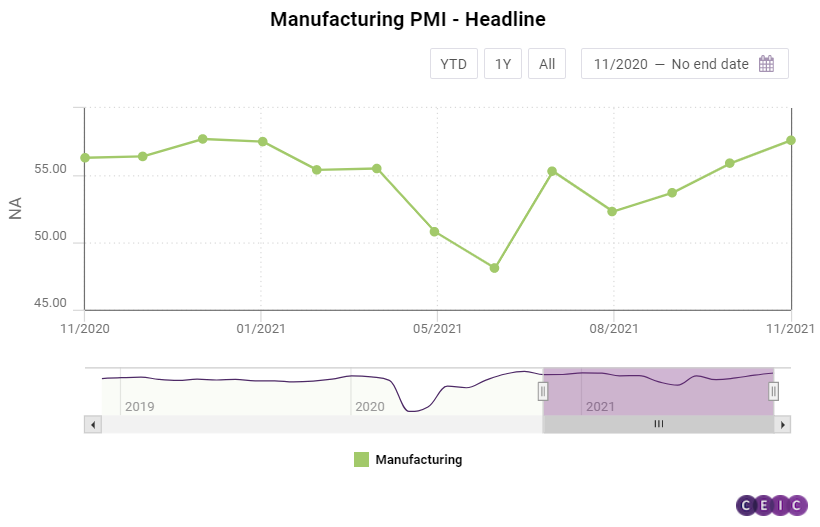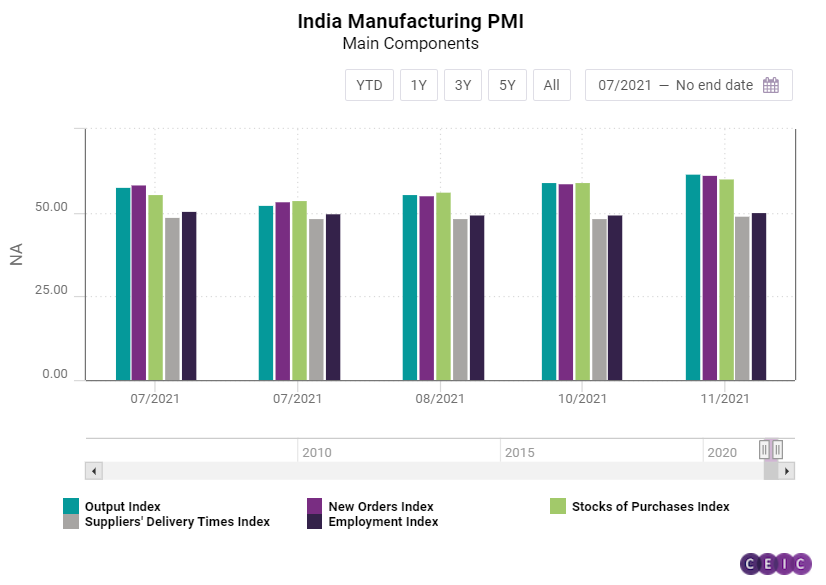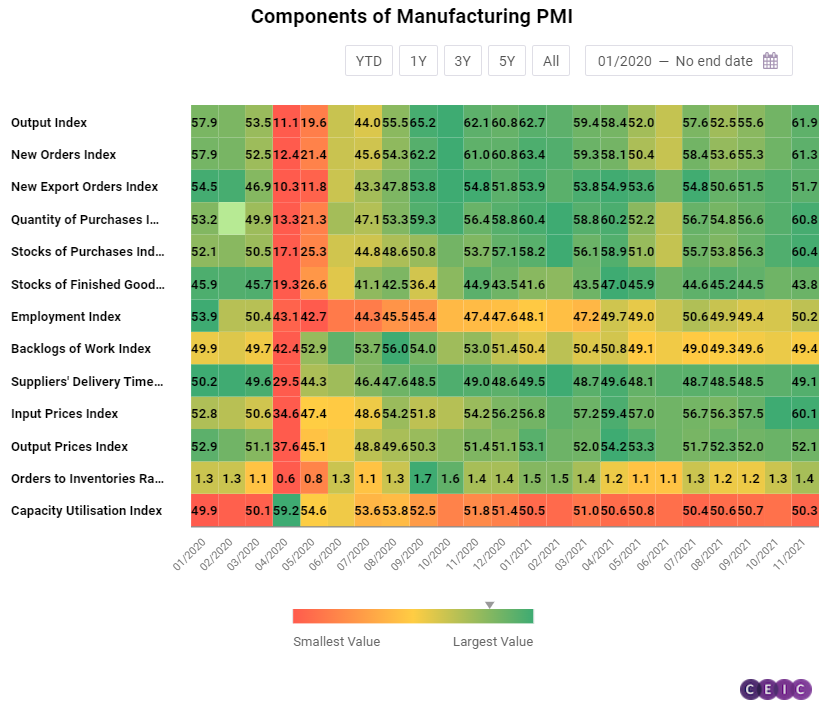
India’s manufacturing PMI continued its growth in November, to 57.6, from 55.9 in October, marking the fourth consecutive acceleration in the index.
While the pace of increase has slowed from October to November, to 1.7pts as compared to 2.2pts increase in October, the index has climbed to a 10-month high. The increase comes on the back of steady economic recovery and reviving consumer sentiment.

Most components of the manufacturing PMI underwent an increase, albeit the pace decelerated from October, much like the headline manufacturing figure. The output index grew to 61.9 in November, from 59.1 in October. The new orders index also grew from 58.7 to 61.3, over the same period. Both quantity and stocks of purchases witnessed increases, to 60.8 by 1.9pts, and 60.4 by 0.8pt, respectively, closing on to pre-second wave values. It is also noteworthy that they remain much higher than their long-term averages of 54.8 and 52.0, respectively. Stocks of finished goods rose by 0.2pt, to 43.8 in November. These indicators suggest an improving consumer demand. On the external front, however, new export orders declined from 52.6 in October to 51.7 in November, likely due to the emergence of the new COVID-19 variant “omicron” and subsequent lockdowns across many countries.

The employment index crossed the 50-mark for the first time since February 2020, to 50.2 in November, as a result of the uptick in manufacturing activity. This officially brings employment in the expansionary phase again. Supplier delivery times, on the other hand, increased to 49.1 in November, from 48.6 in October. The backlogs of the work index reduced marginally by 0.5pts as manufacturing activity grew, to 49.4 over the same period.

With a little respite in commodity prices, especially fuel in India, input prices eased to 60.1 in November from 60.3 in October, after two straight months of increase. Output prices decreased by 0.2pts as well, to 52.1 for the same time frame. The decrease in output prices can also be attributed to the festival season in India. Orders to inventories ratio and capacity utilisation, which are released with a lag, both accelerated in October. Order to inventories grew to 1.3 in November, from 1.2 in October and September. Capacity utilisation increased to 50.8, recording a 0.1pt increase over September and also outgrowing its long-term average of 50.6.
Learn more about the CEIC India Premium Database - the premier source for everything you need to know about the Indian economy, housing an unprecedented wealth of information revealing the drivers of the market.
.png?width=160&name=ceic-logo-Vector%20logo%20no%20tagline%20(002).png)
